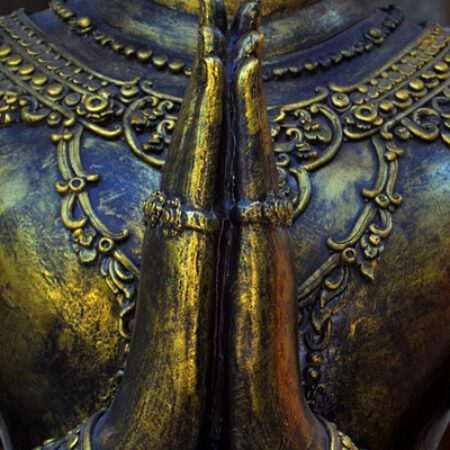by Roger Mock
There’s an old Gospel song with the chorus:
I don’t want to get adjusted to this world, to this world
I don’t want to get adjusted to this world, to this world
I’ve got a home so much better and I’m gonna go there sooner or later
And I don’t want to get adjusted to this world
The song was undoubtedly written as a reaction to the growing use of psychotherapy for “adjustment disorders” like depression and anxiety. Gospel writers had a fondness for poking a little fun at the latest modern inventions, too, as in the lyrics of The Royal Telephone:
Central’s never busy, always on the line;
You may hear from heaven almost any time;
‘Tis a royal service, free for one and all;
When you get in trouble, give this royal line a call.
But I digress. Back to the notion of needing to be adjusted. Psychotherapy, of course, has been and continues to be a great help to many. I will certainly not be refuting its usefulness in guiding us toward healing from our many forms of maladjustment. Still, there remains some lingering truth for me in that first chorus I quoted above.
The evangelical Christian mindset from which the song arose set its sites on the ultimate wholeness that will be inherited by the believer in that “better home” beyond this world. Unity’s founders, Charles and Myrtle Fillmore, had, I believe, a deeper revelation. For them the temporal world was not seen as an insurmountable barrier to the experience of that Wholeness here and now. They held that the Creator had formed us in perfection and that the Truth of who we are as children of God must therefore be true now. Myrtle had famously healed her body of tuberculosis through a spiritual practice in which she regularly affirmed, “I am a child of God, and therefore I do not inherit sickness.” Her healing experience, in fact, gave rise to the whole Unity movement.
What the Fillmores were doing, I think, was aligning themselves with what Eastern philosophies call the large-S Self as opposed to the small-s self, also sometimes called the “not-self.” In Buddhism, the Self is synonymous with the “Buddha Nature,” that which is our true Identity.
The Sikhs are another religious sect that really get this. They use two short words as both their favorite mantra and as a greeting: “Sat Nam”. “Sat” means truth as in Ultimate Truth, as in God. “Nam” means name or identity, but more importantly it is a vibration. As such it resonates with my topic last week and the Biblical concept of Word, the vibration from God that makes the Divine manifest on earth. Sat Nam is much like the Hindu greeting Namaste – I acknowledge the Divine in you, I acknowledge that Truth is your Identity and mine as well. I look beyond the appearance of small self and see the Self that we truly are.
There’s another Sikh mantra – ong sohung, which translates as “That which I am to be I already am.” It resonates with Myrtle Fillmore’s affirmation and dovetails nicely with a key concept in A Course in Miracles, which gives us this version of the mantra: “I am as God created me”. Both traditions are referring to the Self, the Christ Self, who we truly are.
Hear the Good News here. I am NOW as God created me. That which I am to be I already AM. No striving necessary. No attempting to be a better person and never measuring up. The New Testament quotes Jesus as saying, “Be you perfect as your heavenly Father is perfect.” I am certain that he wasn’t asking us to strive for some unattainable perfection, setting the bar so high that we couldn’t even make it out, let alone reach for it. He was saying “Sat Nam. I see and honor the perfect being that you are in Truth.”
I see employing a spiritual practice as means of systematically aligning ourselves with that Truth in order to experience it ever more fully in the here and now. And yes, we could call it making an adjustment; not an adjustment to this world, though, but an adjustment to the Truth that the experience of this transient world so often belies. The invitation from these wisdom traditions is to experience Truth beyond the transient or in Christ’s words, to “be in the world but not of it.”
I’ll leave you with some words from the Upanishads (Hindu scriptures) that we will share on Sunday evening:
The shining Self dwells hidden in the heart.
Everything in the cosmos, great and small,
Lives in the Self. He is the source of life,
Truth beyond the transience of this world.
He is the goal of life. Attain this goal!
Sat Nam
Roger



